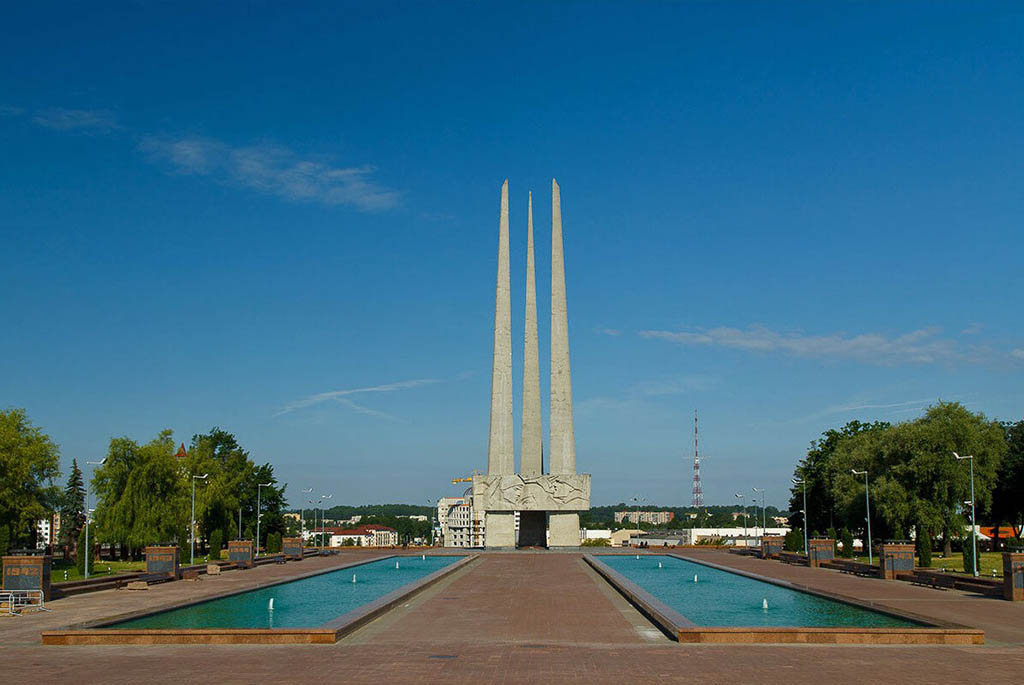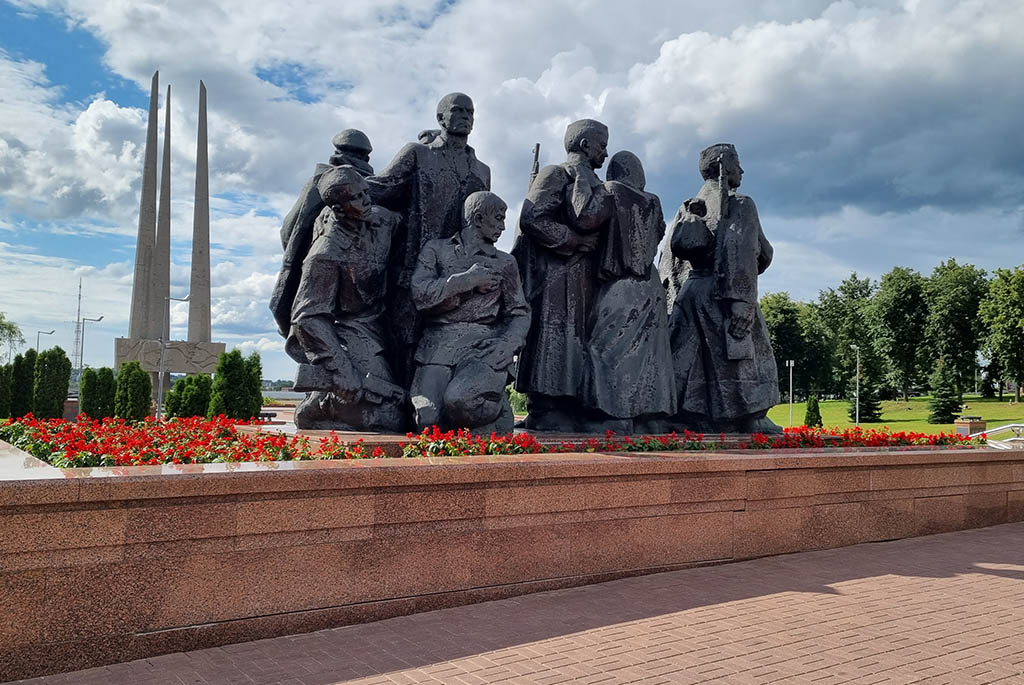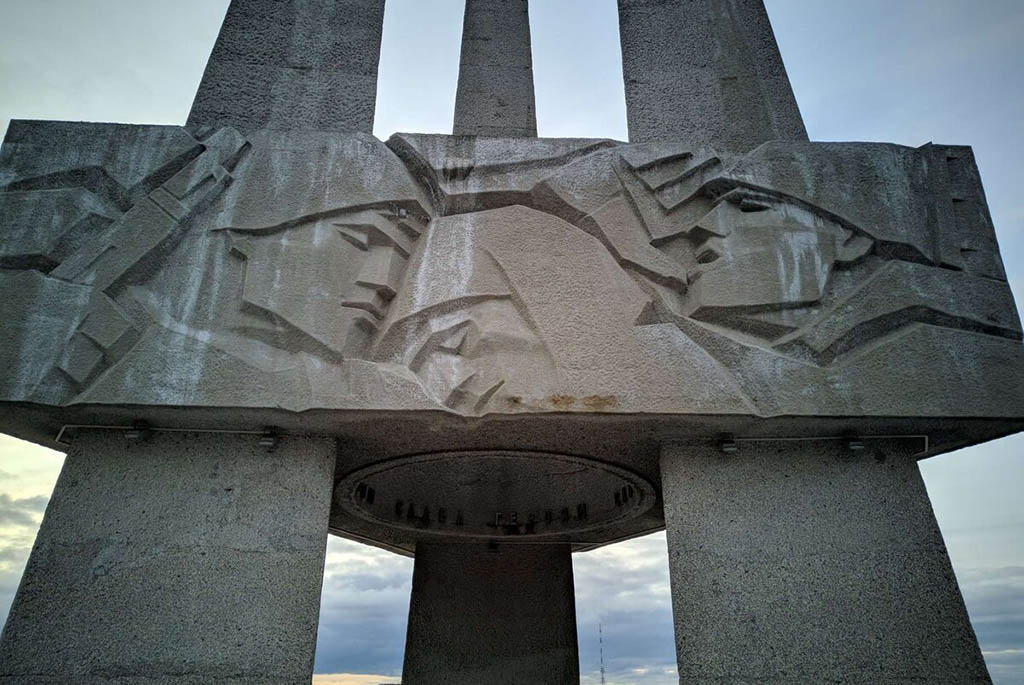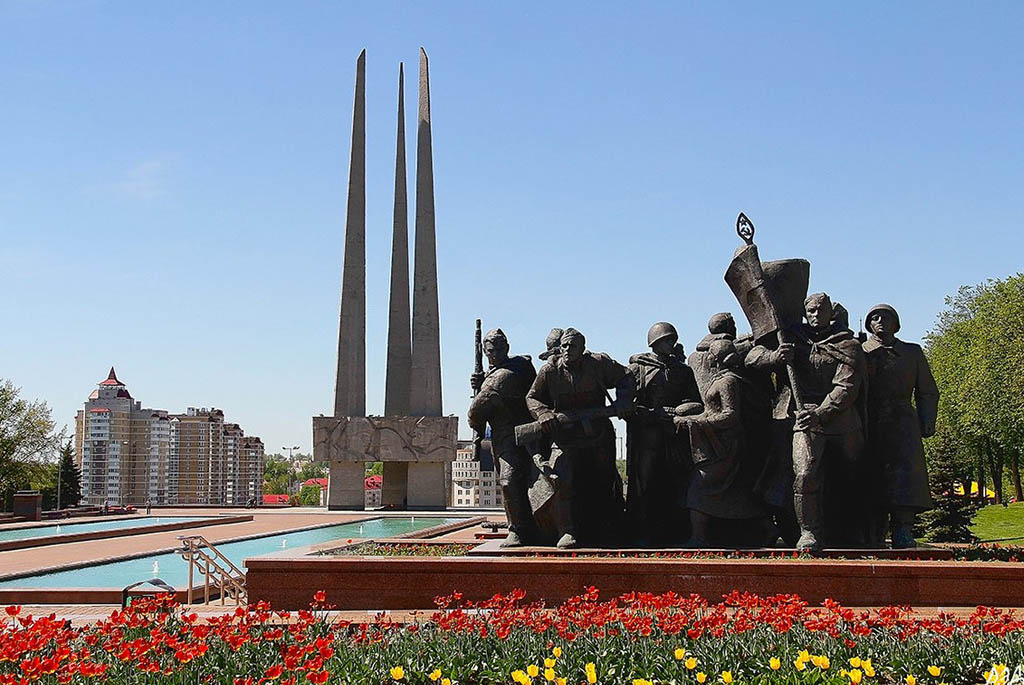It is here that a large memorial complex of the city is located, popularly called “Three Bayonets”. This monument was erected in memory of the heroes who gave their lives for the liberation of the city during the Great Patriotic War. It was opened on June 30, 1974, to commemorate the anniversary of Vitebsk’s liberation from the fascists. Architect Yu. Spit, sculptors Ya. Pechkin, and B. Markov participated in the development of the project.
The "Three Bayonets" Memorial Complex includes a central monument, ten pylons situated on both sides, and two artificial pools with flowing water. The stone pylons list the years during which the war lasted. In the early 90s, the complex's composition was complemented by two sculptural compositions, depicting Soviet soldiers and peaceful citizens.
The main monument consists of three obelisks, 56 meters tall, tapering upwards. At a height of five meters, the obelisks are united by a horizontal granite belt, each face of which features reliefs dedicated to Belarusian soldiers, partisans, and underground heroes who fought for victory. At the base of the composition, in memory of the fallen soldiers, the Eternal Flame burns. Inside, the stone bayonets are connected by a ring inscribed with: "Glory to the Heroes." The sculpture material - grey granite - symbolizes mourning for the fallen defenders of Vitebsk.
The memorial, towering on the bank of the Western Dvina, is striking in its majesty and monumentality. All the space around it is arranged so that the mighty granite bayonets appear quite formidable and powerful. It gives the impression that they are ready to ruthlessly pierce any enemy who steps onto Vitebsk land. On the reverse side of the monument, there is a staircase leading to the river, from where a picturesque view of the left bank of the city opens up.
In the years 2009-2010, the "Three Bayonets" memorial complex was restored, and the surrounding area was also reconstructed. The pylons were faced with granite, sculptures were cleaned, tinted, and waxed. The asphalt surface of the square was replaced with red paving slabs, arborvitae were planted along the pools, and a system of lanterns and spotlights was installed. Near the memorial, an exhibition of military equipment was set up, a significant part of which consisted of exhibits left from the times of the Great Patriotic War – tanks, helicopters, and fighters.
Today, Vitebsk’s Victory Square is a popular place for city dwellers to meet and stroll. Benches for resting, fountains, and an amusement park are located here. Thanks to the lighting, improved territory, and well-organized space, the renovated memorial looks even more solemn and impressive. The stern stone bayonets piercing the sky evoke feelings of admiration and gratitude to the liberators of the city from the fascist invaders. The monument is located in the central part of Vitebsk, a few stops from the railway station.





